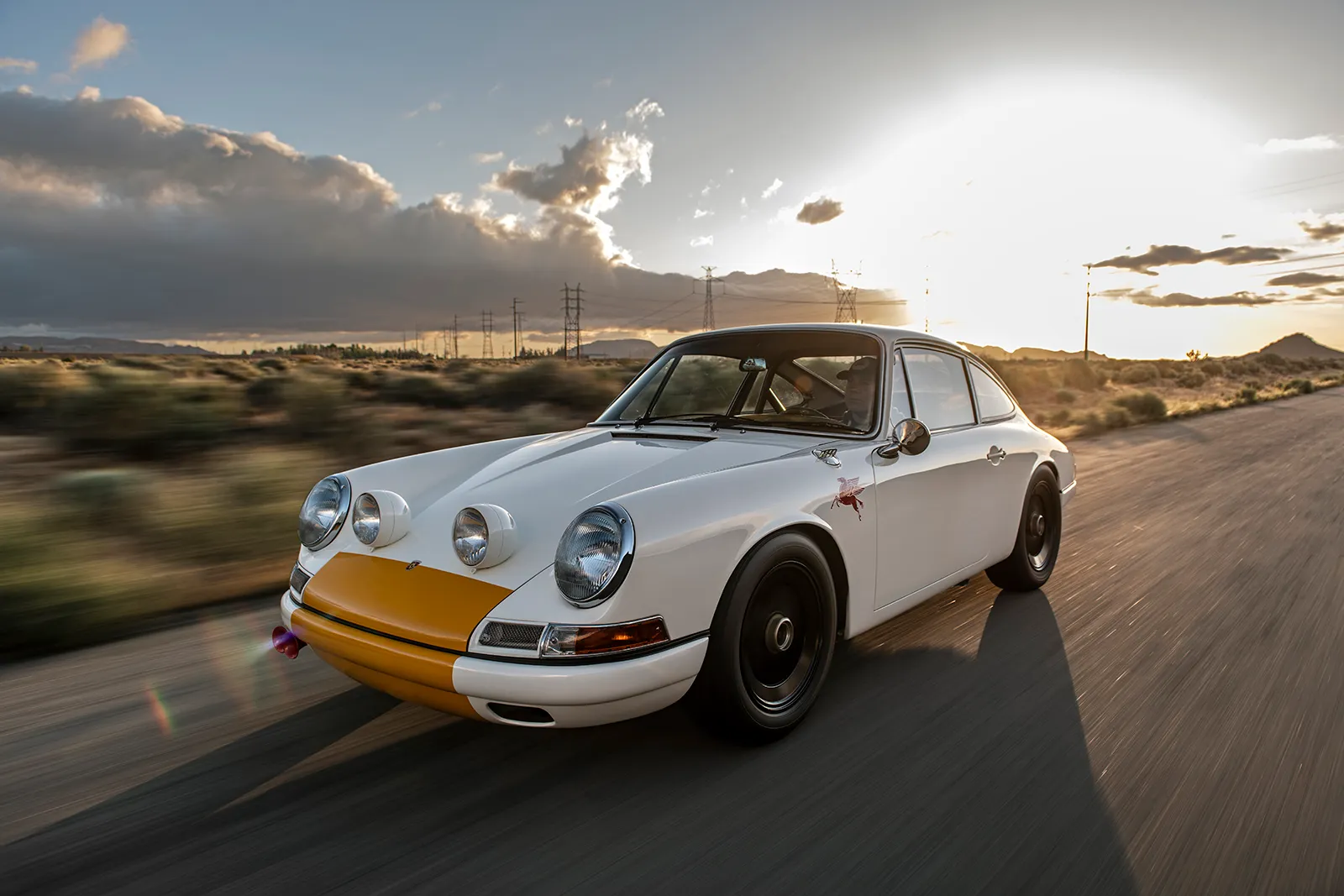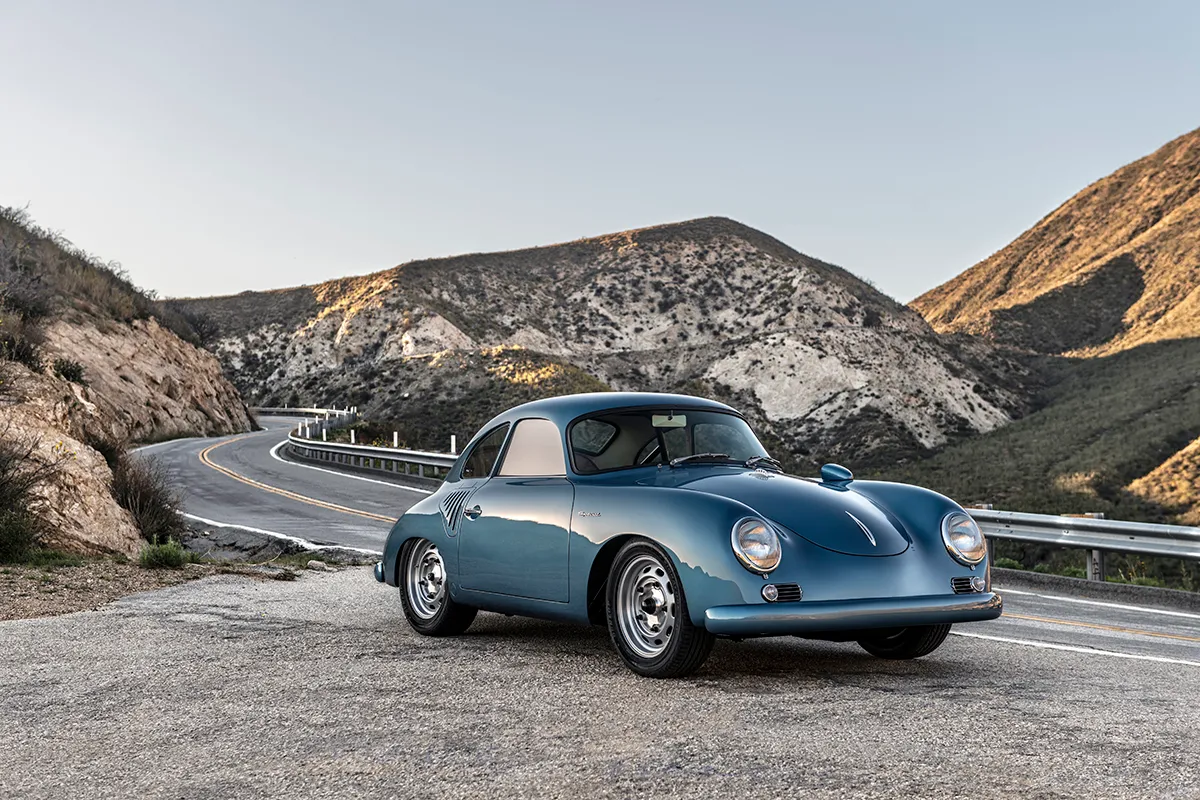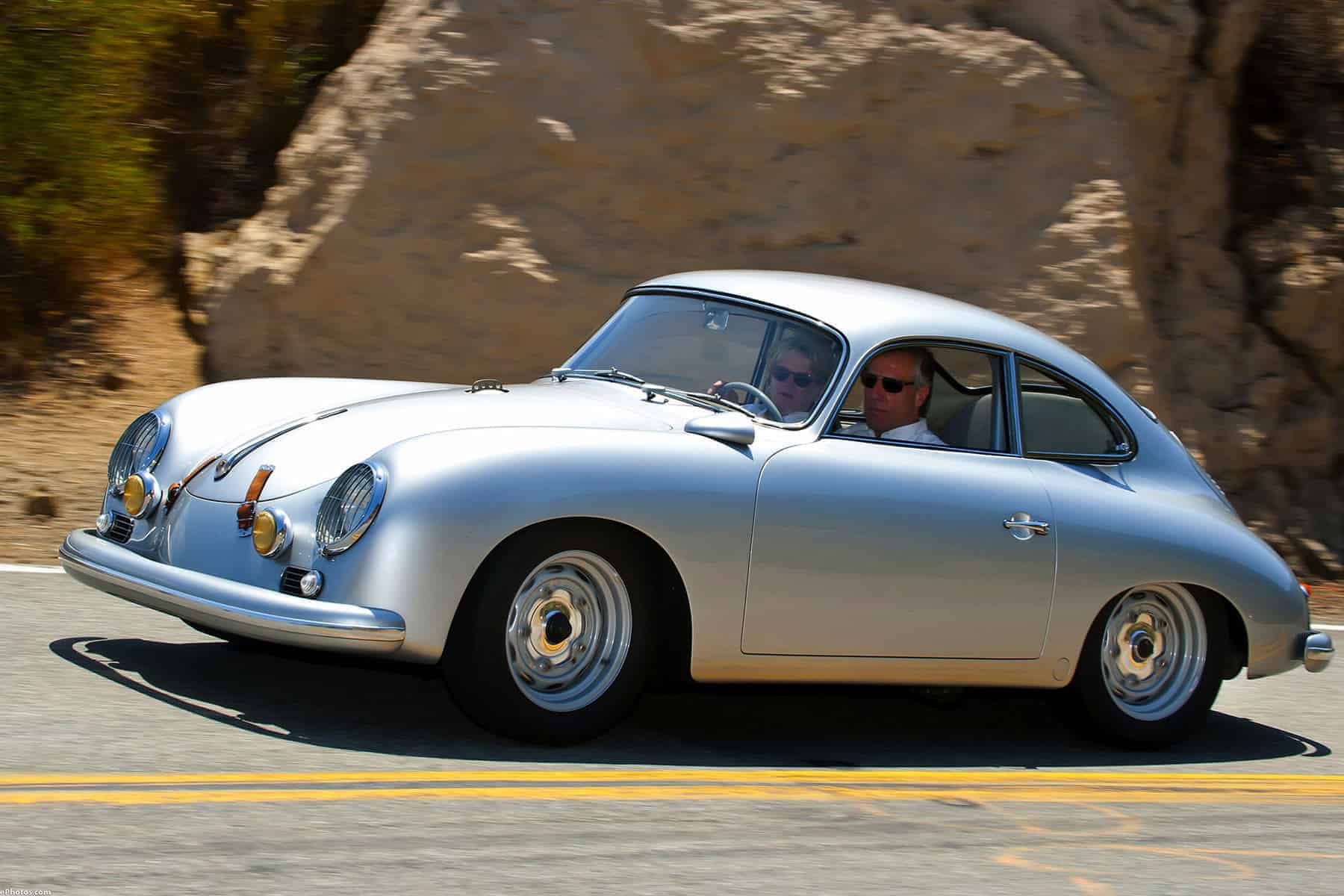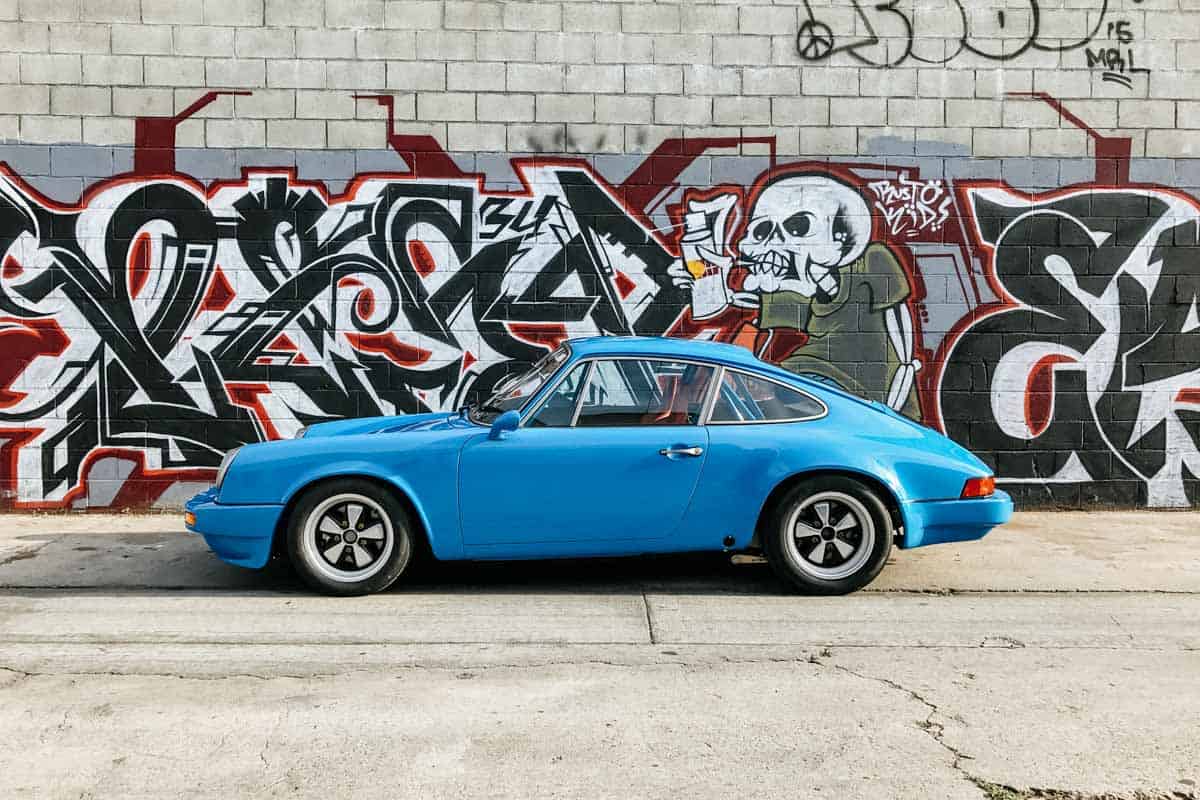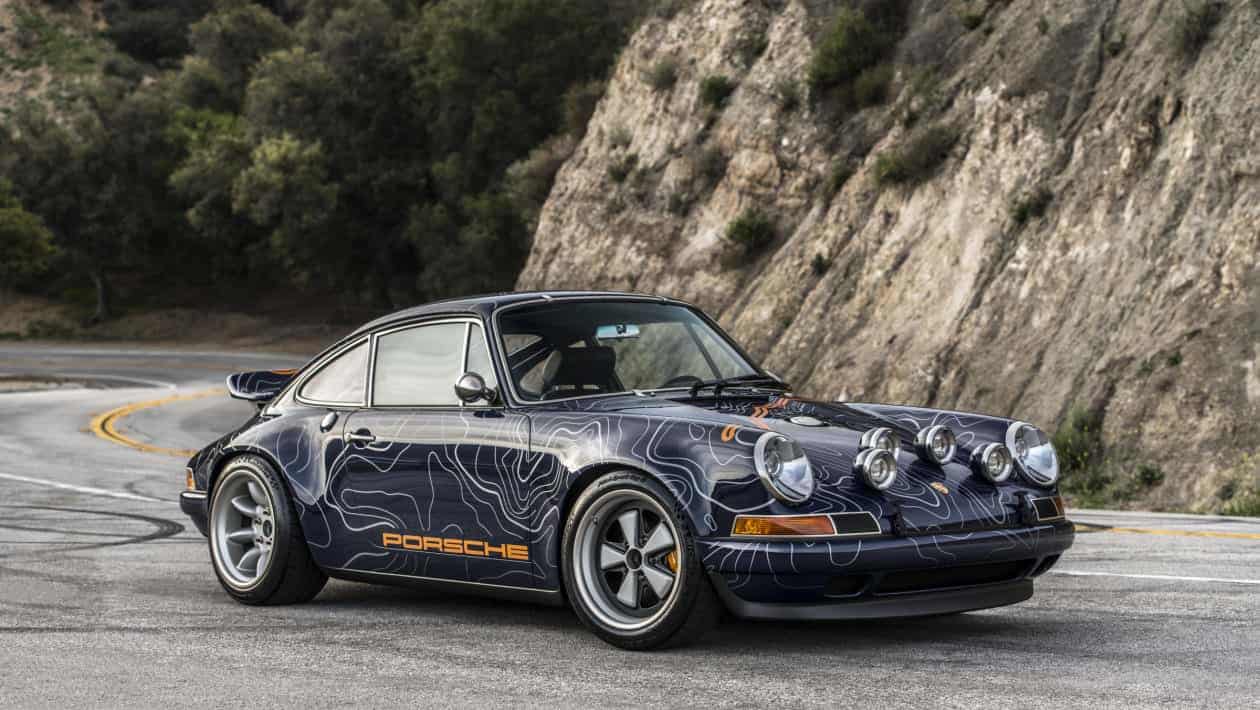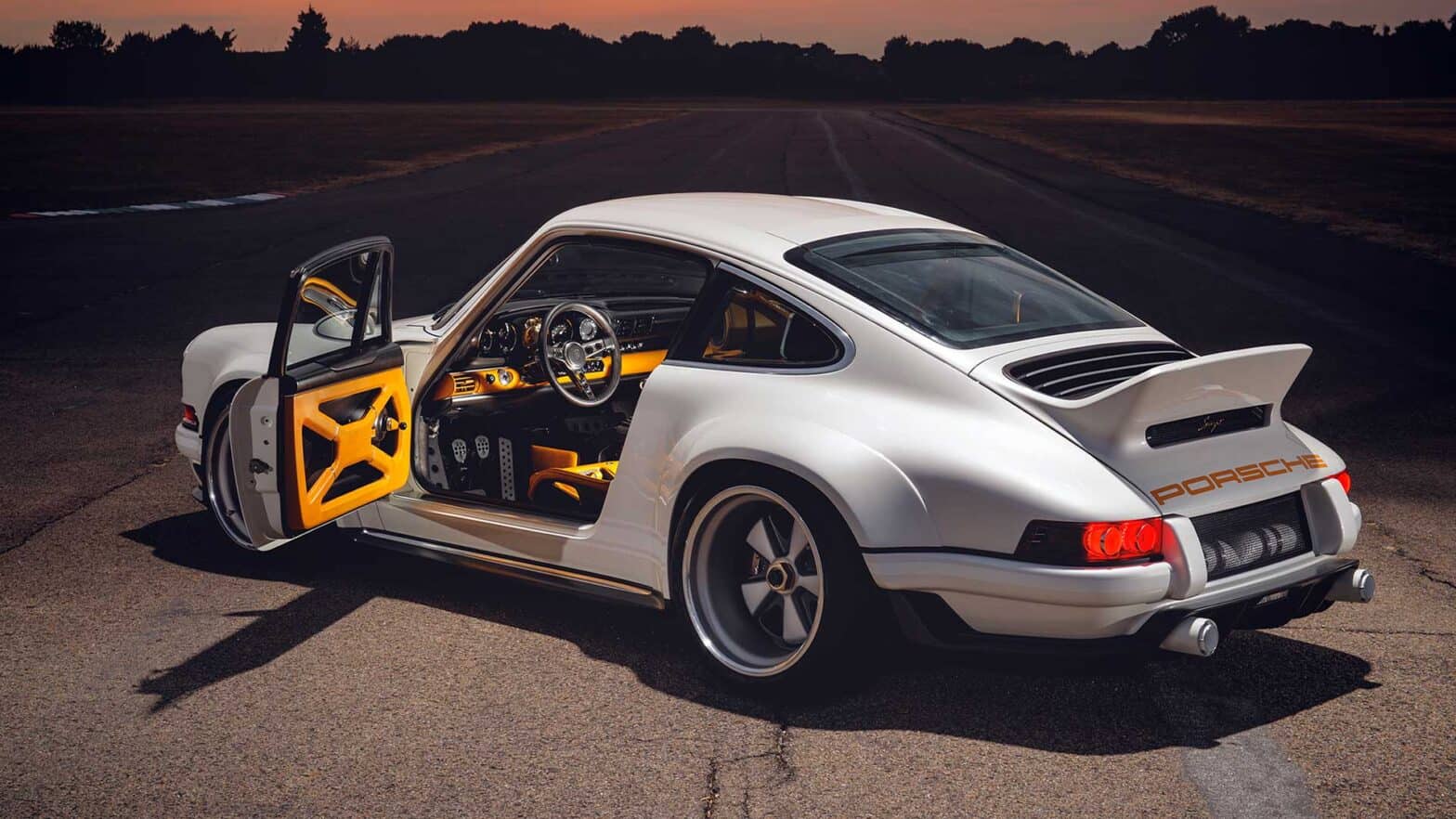Outlaw!
Hot Rod Porsches are a subcult of worldwide Porsche fascination
BY: KEN GROSS
Hot rodding has many definitions – it’s not just ’32 Fords with flathead V-8s.
Take the early Porsche crowd, for example. If the definition of a hot rod is to take an old car, strip it down, upgrade the brakes and suspension, and install a hot engine, the Porsche guys do that – they just don’t call their cars hot rods.
They call them Outlaws.
The term Outlaw arguably originated with Rod Emory, whose LA-area shop builds some of the best modified air-cooled Porsches imaginable. Emory’s sexy, race-inspired Porsche 356s kick-started the Porsche Outlaw trend that swept Southern California and spread across the country. When you understand Rod’s background, it makes perfect sense. His grandfather was Neil Emory, who partnered with Clay Jensen at Valley Custom, in Burbank, one of the finest LA-area shops of the post-WWII era. Valley Custom’s forte was sectioning, a radical surgery process that altered the shape of a stock American automobile by cutting a three-to-four-inch swath of metal from its midsection, lowering the silhouette of the car, while preserving essential elements of the factory design.
“When you’re the grandson of one of the pioneers of hot rodding and custom car building,” Emory notes. “You can’t just leave well enough alone, can you?”
But the hot rodding and customizing Porsches, with very few exceptions, was uncommon.
“When Valley Custom closed in 1961,” Rod says, “my grandfather, Neil Emory, went to work for Chick Iverson at VW-Porsche of Newport Beach. After he graduated from high school, Gary Emory, my Dad, started at the dealership and became the parts manager. About 1974, Chick Iverson and my father started Porsche Parts Obsolete. Chick owned it; my dad ran it. Everything that was a couple of years old or over-stocked, would go back to Porsche’s distribution warehouses. They were actually destroying old, unneeded inventory, so Chip and my Dad bought all of it and started Porsche Parts Obsolete – in Costa Mesa.” (It’s still in business).
“Very soon my dad was selling NOS (New Old Stock) Porsche parts around the world,” Rod continued. “In the back of his warehouse, there was a room where we did some restoration work, playing around with cars for our own personal use. When I was in high school, my dad and I would take old Porsches and lower them, polish the brake drums and trick ‘em out a little bit.”
“Next thing you know, I’m doing a full restoration on a ’53 coupe for myself. I put body-mounted fog lights on it, and hood straps. The Porsche purists were freaking out because we were customizing a rare ’53 model. We went to a couple of events. There was no class to display this car in the late ‘80s, so we came up with this little ‘outlaw’ badge for our deck lids that read, “356 Outlaws.” We put those badges on cars that we were building, and gave that badge to friends who were rodding their cars out.”
“It started as a little private fun club, but people picked up the term, so any Porsche that’s modified now is called an Outlaw.”
There was a reason. Early Porsche 356s had just 60-bhp in “Normal” form, 88-bhp in “Super” guise, and 115-bhp as “Super 90s.” Even with a 2,200-pound coupe (Speedsters were even lighter), that’s not a lot of suds. Typical Outlaw Porsches today pack Porsche 912 4-cylinder engines, bored to 1700-cc’s and even 1800-cc’s, with Weber carbs, hot cams, even twin plug heads, for 150-bhp and more. Some enthusiasts upgrade to 5-speed gearboxes. Suspension mods include aftermarket sports shocks, springs and sway bars. Wider wheels and modern radial tires are a must and most enthusiasts retrofit disc brakes.
Although body modifications are less popular, wider rear fenders, subtle de-chroming and Carrera GT mods like external fuel fillers and lightweight bumpers aren’t uncommon. Rod Emory built sleekly restyled 356 coupe for pop musician John Oates. It’s recognizable as a Porsche but you’d never guess the year.
Looking for the quintessential early engine, ex-racer Bruce Canepa, Scotts Valley, CA is one of several restorers/builders who’ve taken a 911 six block, lopped off two cylinders and built the ultimate 2-liter+ Porsche flat-four. And a few brave enthusiasts like Ken Fenical, aka POSIES, who supplies custom springs to the hot rod community, have fitted water-cooled Subaru flat 4s – good for an easy 200+ horsepower.
The 911 crowd has its Porsche Outlaw devotees, as well. Practitioners like Magnus Walker (Urban Outlaw), Marlon Goldberg (LA Workshop 5001) and Rob Dickinson, who founded Singer Vehicle Design, will build you a modified, restyled, air-cooled 911 that will flat run away and hide from many newer Porsches. But you’ll pay as much as $500,000 for that privilege.
Dickinson’s Singer-badged Porsches represent his “…personal vision of the world’s greatest air-cooled 911.” They are extensively modified 964s and 993s, the last of the air-cooled models. Dickinson likes to say his cars are “…restored, reimagined and reborn.” Singer 911s are reshaped and restyled. They employ carbon fiber, exquisite leather, extensive use of nickel-plating and their flat sixes are modified to a fare-thee-well. There’s no shortage of clients.
Magnus Walker was one of the first to modify 911s. His book, Urban Outlaw, underscores his and many people’s fascination with the seemingly immortal air-cooled 911. “Our passion with the Porsche is the driving experience the car offers,” Walker says. “… Porsche is a language. It doesn’t matter if you speak English, German or Japanese. It’s a worldwide, universal language that everyone can relate to. … It’s a driving experience, an art experience, as well as a bond, a sort of connecting experience.”
Want to do it yourself? There’s a whole cadre of premier aftermarket suppliers like ANDIAL (racing, suspensions, engines, etc. – note: Porsche bought the ANDIAL company years ago), Nickies (high performance cylinders), Air Power Racing (high performance engines), Shasta Design (cams, crankshafts, rods and engine parts), and many, many others, who will sell you all you need to hot rod your old Porsche
OK, you could argue that this transforms a nice old car into a Frankenstein monster, but (of course) I disagree. It’s no different than the “resto-mod” craze that’s seen ill-handling vintage muscle cars transformed into faster, safer, more reliable cruisers. The Porsche Club of America, and its many subgroups, don’t frown on modified cars and the cars are welcome at club gatherings. You can find dozens of suppliers in Porsche Panorama, the PCA monthly and in The Porsche 356 Registry, to name a few publications. Talking with many Outlaw owners, they’ve usually started with a beater 356 or 911, so you could argue that they are preserving cars that might otherwise not have been restored. If you can, find a copy of “How to make an old Porsche Fly,” by Craig Richter – it’s been out of print for years – or download it from the author’s website for a nominal fee. It’s a great start.
One of the best-known Porsche Outlaw owners is Bruce Meyer, whose collection of historic racecars, Le Mans winners, full classics and hot rods, is one of the best in country. “I’ve had my Outlaw Porsche 356 for at least 25 years.’ Says Bruce. “I’m sure I didn’t invent the idea, but I was certainly one of the first. I bought my little ’57 356A Coupe in a basket, unassembled and it was red. I’d already gone through my “red car” period and thought it would look cool as an old silver Porsche GT. The engine is a bit over 1800-cc and develops about 125-bhp, which is enough. It’s got the full GT appearance group with Speedster seats and a roll bar. I’ve done a dozen rallies and driven it from Chicago to LA on Route 66 on two occasions. Since I built it, we’ve done over 20,000 trouble-free miles.”
“I’ve driven Porsches since 1961,” Bruce continues. “That’s over sixty years, and truth be told, it’s my most favorite marque. We also have an Outlaw ’72 911S with a 3-liter Twin Plug ANDIAL engine…it makes my ’73 lightweight RS feel slow! I love the Outlaw concept,” he adds. “It’s another fun way to enjoy the brand and much like hot rodding … you do it your way with cues inspired by Porsche’s rich racing history. With Porsche prices being what they are for the pure examples, it leaves a little on the table for the creative ‘Porsche-files’ to stand out and be in the game.”
Rob Ida, who owns Ida Automotive in Morganville, NJ, displayed his much-modified Outlaw 911 at the SEMA (Specialty Equipment Marketer’s Association) show a few years ago, to great acclaim. “One thing I love about the Porsche culture,” Ida says, “is that there’s an encouragement to modify or personalize the cars. Unlike Ferrari owners who seem to be turned off by modifications, the Porsche owner has a blank canvas. Component interchangeability among different models and years, allows updates while still using OE parts.” Ida adds, “Growing up mostly around American hot rodders, I was surprised how many Porsche owners were also hot rod owners. ‘Outlaw’ is the term I think of when I’m imagining a modified or personalized Porsche, with the ongoing ability to update and improve. My personal Porsche 356A Outlaw coupe has been one of the most enjoyable and versatile vehicles I’ve owned.”
On a personal note, I bought a 1961 Porsche Super 90 T5 Coupe last year for my wife Trish. Despite an inspection, it turned out the engine had two bad cylinders. Secretly, I was delighted. Porsche racer Chuck Allard rebuilt it with a 1720-cc big bore kit, Shasta Design Engineering barrels, J.E. forged pistons, a Tim Berardelli racing cam, 912 heads and balanced rods, and several more improvements. Eric Wills from Wills Werkes fitted a high-torque starter, a 911 dual chamber master cylinder, new Koni’s and then he reinstalled the engine. Is it an Outlaw now? Not really – it’s just got more power and torque than the factory provided.
So, what do Porsche restorers think of all this? I spoke with Cam Ingram, owner of Road Scholars, in Durham, NC, one of the premier Porsche restorers in the country.
“I think the Outlaw builders make a vital contribution to the Porsche brotherhood,” Cam said. “They’ve re-stimulated interest in the early 356s. Since the dawn of time, people have been modifying Porsches, especially Speedsters. Outlaws are just a new interpretation. I think there’s a market for it, and it’s good for the brand and the hobby to have all these young people re-engaged. The collector car hobby is expensive, and this allows a way for guys to get involved at a different price point.”
Cam’s dad, Bob Ingram, owned one of Magnus Walker’s “Urban Outlaw” modified 911’s. The Ingrams were impressed that Magnus had come to the US from the UK with very little money or opportunity, then modified 911’s for himself and became a popular success. “My father was interested in buying something that had become a cultural artifact,” Cam says. “We enjoyed owning it, but then we sold it. It became so recognizable, my father literally couldn’t drive the car around because of all the attention it drew.”
I had to ask Cam if he’d build an Outlaw for a client. “We’ve had that (request) happen,” he said. “But we are really passionate as a company in authentically restoring these cars. It’s a niche market, we’re good at it. What drives me is to make sure we’re preserving the cars the way the company actually produced them. There are many guys who do those (Outlaws), Rod Emory being the top guy, but we’re well-known for our authentic restorations. Rod works on some cars that would never have been saved. I applaud him. We don’t get to do the super-sexy stuff. We do everything to factory specs.”
What does Porsche AG think of private companies modifying its older models? It’s simple. Porsche Motorsport North America is now assembling all-new engines for Singer – that’s more than a tacit approval.
With Porsche AG selling more new cars than any time in its history, top management in Stuttgart and Atlanta would be foolish to buck this trend. Outlaws flatter the brand, and they keep more Porsches on the road.
Bottom line: the latest factory Porsche 911 is a remarkable car — much faster, very sophisticated and more luxurious than any of its predecessors. But for customers who want the ultimate in personalization and exclusivity, a modified Porsche, whether it’s an Emory 356A or the latest multi-million-dollar Singer DLS (Dynamics and Lightweighting Study) 911 coupe is the answer. You can’t get that from the factory.
As long as there are Porsches, there will be outlaws.
